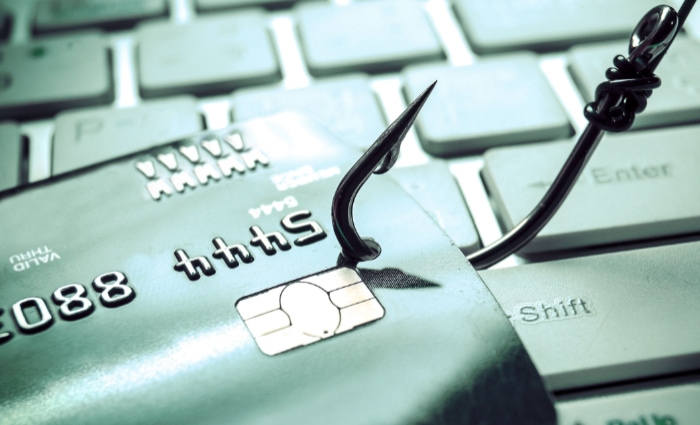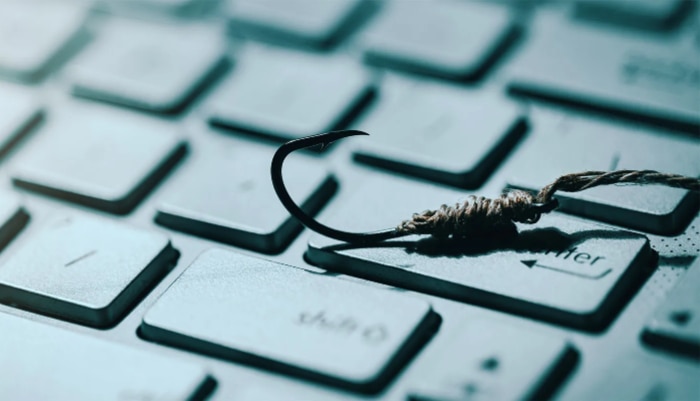Steps to Take After Clicking on a Phishing Link

Digital realms are fraught with invisible threats, and phishing scams stand out as one of the most cunning. These deceptive maneuvers cleverly disguise themselves, waiting for just one click to unravel your digital security.
But what happens if you accidentally take the bait? This isn't just a story of digital doom; it's a guide to reclaiming your peace of mind and fortifying your online defenses after a phishing attack. With cyber threats lurking in unexpected corners, understanding the steps to bounce back from a phishing link click is more crucial than ever.
Immediate Actions Post-Click
Accidentally clicking on a phishing link can feel like a digital misstep, but it's not the end of the road. Quick and decisive actions can significantly mitigate potential damage.
The moments immediately following the click are crucial. Let's walk through the steps you need to take to secure your information and minimize the impact of the incident.
Disconnect from the Internet
The first line of defense after clicking on a phishing link is to cut off the attacker's access to your device. By disconnecting from the internet, you halt any ongoing data transmission, potentially preventing the theft of your personal information or the spread of malware.
Steps to Disconnect:
- Wi-Fi: Click on the Wi-Fi icon in your system tray (for Windows) or menu bar (for macOS) and select ‘Disconnect' or ‘Turn Wi-Fi Off.'
- Ethernet (Wired Connection): Unplug the Ethernet cable from your computer or the modem.
- Mobile Data: Go into your phone's settings, select ‘Network & Internet,' and then turn off mobile data.
Do Not Enter Any Information
If the phishing link led you to a page asking for personal information, resist the urge to input anything. Entering details on a fraudulent page can lead to identity theft or financial loss.
Key Points:
- Pop-ups: Close any pop-ups that appear. If you can't close them, shut down your browser entirely.
- Suspicious Forms: Avoid filling out any forms or providing any personal, financial, or login information.
- Verification Requests: Ignore any requests to verify your identity or account details. Legitimate organizations will not ask for sensitive information through unsecured means.
Taking these immediate steps can significantly reduce the risks associated with clicking on a phishing link. Remember, the quicker you act, the better your chances of preventing serious consequences.
Stay calm, follow these guidelines, and prepare to assess the situation further.
Assessing the Situation
After you've taken immediate action to secure your device and data, the next step is to understand the scope and potential impact of the incident.
This stage involves examining the nature of the phishing attack and checking your device for any signs of compromise.
Identify the Type of Phishing Attack
Phishing comes in various forms, each with its own set of tactics and targets. Recognizing the type of phishing attack you encountered can provide insights into the potential risks and guide your response strategy.
Common Types of Phishing Attacks:
- Email Phishing: The most common type, where attackers send fraudulent emails designed to steal user information.
- Spear Phishing: A more targeted form of phishing, where attackers customize their message to fit their specific victim, often using personal information to appear more convincing.
- Smishing: Phishing conducted via SMS, where text messages are used to lure victims into revealing sensitive information or downloading malware.
Understanding the mechanism of the attack helps in anticipating the potential fallout and informs the specific countermeasures you'll need to take.
Scan for Malware
If the phishing attack potentially involved malware, conducting a thorough scan of your system is crucial. Malware can take many forms and may have been designed to steal information, damage your system, or even lay dormant for future attacks.
Steps to Scan for Malware:
- Use Reputable Antivirus Software: Ensure you have reliable and up-to-date antivirus software installed.
- Run a Full System Scan: Initiate a comprehensive scan of your entire system. This process might take some time, but it's essential for detecting and isolating threats.
- Follow Recommendations: After the scan, follow any recommendations provided by the software to deal with detected threats. This might include quarantining suspicious files or removing them entirely.
Taking these steps to assess the situation thoroughly is crucial. It helps in understanding the specific nature of the threat you're facing and in preparing an effective plan to address any potential damage.
The clearer your assessment, the more targeted and effective your response will be.
Damage Control

After assessing the situation and understanding the nature of the phishing attack, it's time to take action. Damage control is about mitigating the impact, securing your accounts, and preventing further unauthorized access.
Change Your Passwords
One of the first and most effective steps in damage control is to secure your accounts by changing your passwords, especially if they might have been compromised during the phishing attack.
Secure Your Accounts:
- Prioritize Affected Accounts: Start with the accounts that are directly linked to the phishing attack. This might include your email, bank accounts, or any accounts you accessed recently.
- Use Strong, Unique Passwords: Create passwords that are difficult to guess. Use a mix of letters, numbers, and special characters. Avoid using the same password across multiple sites.
- Consider a Password Manager: To keep track of your different passwords, consider using a password manager. It's a secure way to manage your login credentials without the risk of forgetting them or using overly simple passwords.
Notify the Right People
In the wake of a phishing attack, it's important to communicate with the relevant organizations. This can help protect your financial assets, assist in tracking the attackers, and prevent others from falling victim to the same scam.
Who to Contact:
- Banks and Credit Card Companies: If you suspect that your banking or credit card details have been compromised, contact your bank immediately. They can monitor your accounts for suspicious activity and, if necessary, issue new cards.
- IT Department: If the phishing attack occurred on a work device or is related to your job, notify your company's IT department. They can take steps to secure your work accounts and prevent the spread of the attack within the organization.
- Credit Bureaus: Consider contacting credit bureaus to set up fraud alerts or credit freezes, especially if you suspect that your Social Security Number or other sensitive personal information has been compromised.
Fortify Your Defenses
After navigating through the immediate aftermath of a phishing attack and implementing damage control measures, it's time to strengthen your defenses. This phase is about building a more resilient shield against future threats and ensuring your digital environment is not just restored but reinforced.
Update and Patch Your Systems
Keeping your software and systems up-to-date is a fundamental aspect of digital security. Software updates often include patches for security vulnerabilities that have been discovered since the last update.
Ensuring System Security:
- Regular Updates: Make sure your operating system, antivirus software, and other critical applications are set to update automatically. This ensures you benefit from the latest security patches without having to remember to install them manually.
- Secure Configurations: Review the security settings on your devices and applications. Ensure you're not unknowingly allowing excessive permissions or data sharing.
- Stay Informed: Keep an eye on news about security breaches or vulnerabilities related to the software and devices you use. Staying informed helps you react promptly to threats and updates.
Enhance Security Measures
Beyond updates, enhancing your security involves adopting practices and tools that provide additional layers of protection. These measures can significantly decrease the chances of successful attacks.
Advanced Protection Strategies:
- Multi-factor Authentication (MFA): Activate MFA on all accounts that offer it. MFA adds an additional layer of security by requiring two or more verification methods to access your account, not just your password.
- Secure Browsing Practices: Be cautious about the websites you visit and the links you click. Use web protection tools that can alert you about suspicious websites.
- Email Security: Treat emails with caution, especially those that ask for personal information or urge you to click on a link. Use email filtering options to help identify and block potential phishing emails.
Educate and Prepare for the Future
Surviving a phishing attack is a learning experience. The knowledge and insights gained from the incident should serve as a foundation for not just recovery, but also for future preparedness.
Learn to Recognize Phishing Attempts
The first step in avoiding phishing attacks is being able to identify them. As cybercriminals become more sophisticated, understanding the telltale signs of phishing can be your best defense.
Recognizing Red Flags:
- Suspicious Sender: Verify the email address or the phone number of the sender. Phishers often masquerade as legitimate institutions.
- Urgent Language: Be wary of messages that create a sense of urgency or invoke fear, prompting immediate action.
- Mismatched URLs: Hover over any links in the email without clicking. If the URL address looks suspicious or doesn't match the supposed destination, it's likely a phishing attempt.
- Request for Personal Information: Legitimate organizations usually don't ask for sensitive information via email or text messages.
Develop a Response Plan
Having a clear, predefined plan can significantly reduce the impact of a phishing attack. A response plan ensures you're not making decisions in a panic and that you're covering all necessary steps to secure your digital life.
Components of an Effective Response Plan:
- Immediate Actions Checklist: List the first steps to take after suspecting a phishing attempt (e.g., disconnecting from the internet, running antivirus scans).
- Contact List: Have a list of essential contacts, including your bank, credit card companies, and IT support, easily accessible.
- Regular Security Audits: Schedule periodic checks on your account security, software updates, and password strength.
Conclusion
Falling victim to a phishing attack can be a daunting experience, but it's far from a losing battle. This journey through the immediate steps, assessment, damage control, and the fortification of your digital defenses, along with the emphasis on education and preparation, equips you with the tools and knowledge to respond effectively.
Remember, quick action can minimize harm, regular updates can shield your data, and a deep understanding of phishing tactics is your best safeguard. Preparing a response plan ensures you're always a step ahead.
Cybersecurity is an ongoing process, and your resilience in the face of digital threats is key. Stay vigilant, stay informed, and you'll navigate the digital world with confidence and security.


